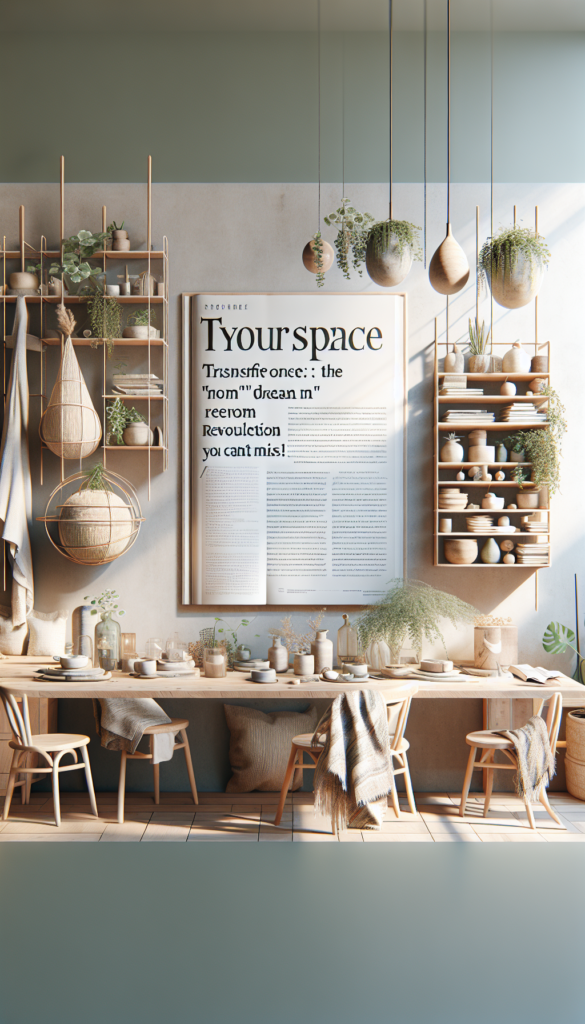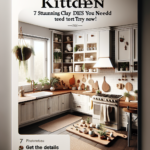
Introduction: Crafting Your Dream Room
Imagine stepping into a space that feels tailor-made to your every desire—a sanctuary that reflects your style, needs, and personality. Welcome to the concept of “my dream room”, a trend that is taking the interior design world by storm. Whether you’re looking to create a cozy reading nook, a vibrant home office, or a serene bedroom, this guide will help you transform your vision into reality.
Understanding the ‘My Dream Room’ Trend
What Makes a Room ‘Dreamy’?
Creating your dream room is not just about aesthetics; it’s about functionality and personal expression. Here are some characteristics that define this trend:
– Personalized Design: Reflects your unique taste and lifestyle.
– Functional Spaces: Serves a specific purpose, whether it’s relaxation, productivity, or entertainment.
– Aesthetic Appeal: Combines elements that are visually pleasing and harmonious.
Why Has It Become So Popular?
The rise of remote work and the need for personal sanctuaries within our homes has fueled the popularity of the ‘my dream room’ concept. People are seeking environments that nurture their well-being and creativity.
Steps to Designing Your Dream Room
1. Define Your Purpose
What do you want your room to achieve? Start by identifying the primary function of the space. Consider:
– A place to unwind and relax
– A creative studio for art or crafts
– A productive home office
– A multifunctional guest room
2. Create a Vision Board
Visual inspiration is key. Use Pinterest to gather images, color palettes, and decor ideas that resonate with you. Tip: Organize your pins into categories like furniture, lighting, and textiles to streamline your design process.
3. Choose a Color Scheme
The color scheme sets the mood for your dream room. Here are some popular choices:
– Calm Neutrals: Perfect for a soothing and timeless look.
– Bold Accents: Add vibrancy and energy to the space.
– Monochromatic Themes: Offer a sleek and modern aesthetic.
4. Select Your Furniture
When choosing furniture, consider both style and functionality:
– Multi-functional pieces: Like a sofa bed or an expandable dining table.
– Signature items: Such as a vintage armchair or a statement coffee table.
– Comfort is key: Ensure seating and bedding are as comfortable as they are stylish.
5. Incorporate Textures and Patterns
Mixing textures and patterns adds depth and interest to your room:
– Layered textiles: Use rugs, throws, and cushions for warmth and coziness.
– Pattern play: Mix stripes, florals, and geometrics for a dynamic look.
6. Lighting is Everything
Lighting can transform the ambiance of your room:
– Ambient lighting: Provides overall illumination.
– Task lighting: Like desk lamps or under-cabinet lights for focused work.
– Accent lighting: Highlights features like artwork or architectural details.
7. Personalize with Accessories
Accessories are the finishing touches that make a space uniquely yours:
– Artwork and Photography: Display pieces that inspire or evoke memories.
– Greenery: Incorporate plants for a touch of nature and freshness.
– Books and Collectibles: Showcase personal interests and hobbies.
DIY Tips for Budget-Friendly Dream Rooms
Upcycling and Thrifting
– Repurpose old furniture: Sand and paint an old dresser for a fresh look.
– Shop second-hand: Find unique and affordable pieces at thrift stores or online marketplaces.
DIY Decor Projects
– Gallery walls: Create a feature wall using framed art or photographs.
– Handmade textiles: Knit or crochet your own throws and cushions.
Conclusion: Your Dream Room Awaits
Creating ‘my dream room’ is a journey of self-expression and creativity. By following these steps and tips, you can design a space that is not only beautiful but also deeply personal. Remember: It’s about making your space work for you, reflecting your personality, and ultimately, bringing you joy. Happy designing!


